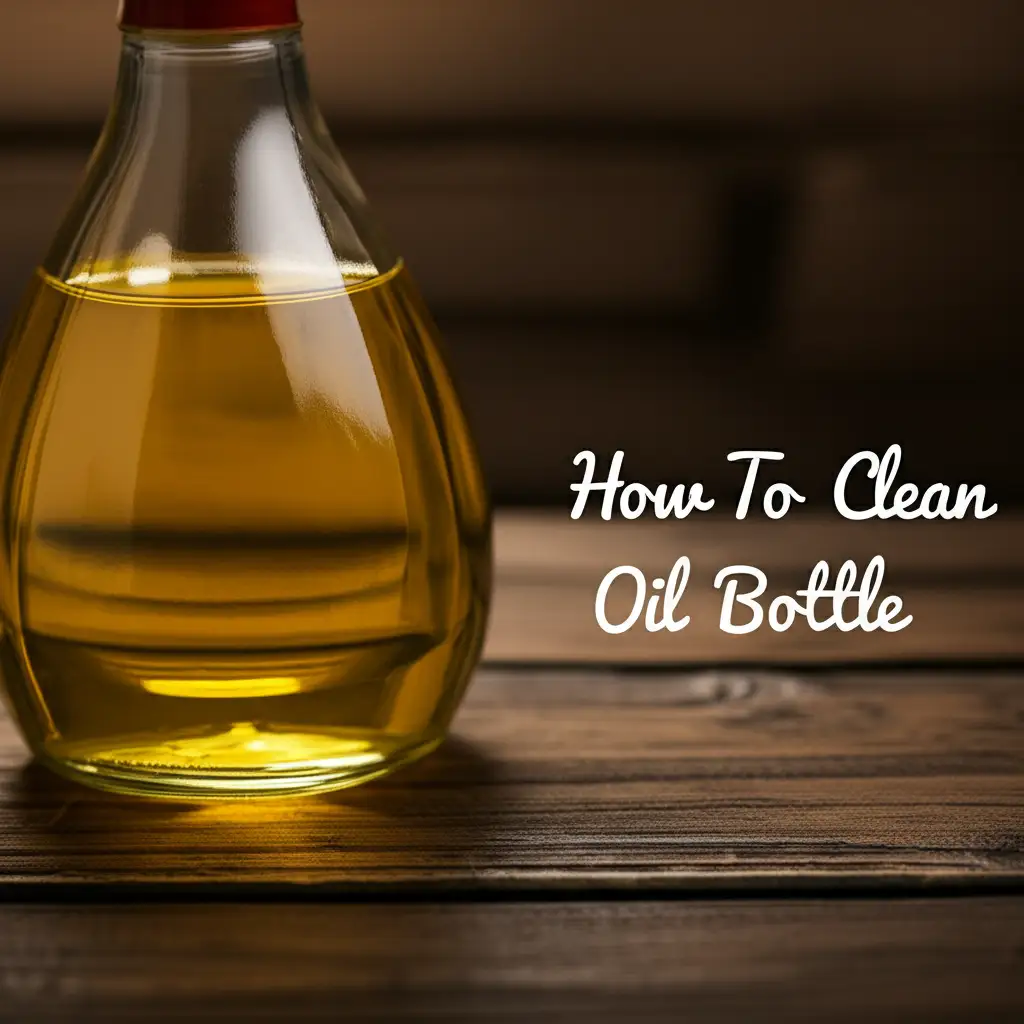· Kitchen Cleaning · 13 min read
How To Clean Stained Coffee Mugs

How to Clean Stained Coffee Mugs Effectively
Do you notice brown rings inside your favorite coffee mugs? We all love our daily brew, but over time, coffee leaves behind stubborn stains. These marks make even clean mugs look dirty and unappealing. You do not need to replace your favorite cup.
I understand this common problem. Many people wonder how to clean stained coffee mugs. This article provides simple, effective methods to restore your mugs to their original shine. We will cover various techniques using common household items. You will learn about baking soda, vinegar, and other natural solutions. We will also discuss how to prevent stains in the future. Get ready to enjoy sparkling clean mugs again.
Takeaway
- Use baking soda and water paste for simple scrubbing.
- Combine vinegar and salt for a strong, natural abrasive.
- Try denture tablets or hydrogen peroxide for tough stains.
- Rinse mugs promptly after use to prevent new stains.
To clean stained coffee mugs, create a paste with baking soda and water, scrub the stained area, let it sit for a few minutes, then rinse. Alternatively, soak the mug in white vinegar or use a lemon and salt mixture for effective stain removal.
Understanding Coffee Stains and Why They Form
Coffee stains are common, but many people do not know why they form. These stains come from tannins present in coffee beans. Tannins are natural organic compounds. They leave a dark pigment on porous surfaces like ceramic or porcelain. Over time, these pigments build up.
Every time you pour coffee, a thin layer of residue is left behind. This residue dries and adheres to the mug’s surface. Regular washing might remove loose residue, but it often does not tackle the ingrained stains. Dishwashers can sometimes make the problem worse. The high heat can bake the stains onto the mug. This makes them even harder to remove later.
The porosity of the mug material also plays a role. Ceramic and porcelain mugs have tiny pores. These pores trap the coffee pigments deeply. Plastic mugs can also stain, but the process is slightly different. Plastic absorbs the color more directly. This makes the stain penetrate deeper into the material. Removing these dark rings is a common kitchen cleaning challenge.
Gathering Your Cleaning Arsenal: Essential Tools and Supplies
Before you start cleaning, gather the right tools. Having everything ready makes the process smoother. You probably have most of these items in your pantry. You do not need specialized cleaners for this task.
First, you will need a non-abrasive sponge or a soft cloth. Avoid steel wool or harsh scrubbers. These can scratch the mug’s surface. Scratches create more places for future stains to hide. A regular kitchen sponge works well. You can also use an old toothbrush for hard-to-reach areas. This helps get into grooves or around handles.
Next, collect your cleaning agents. Baking soda is a must-have for stain removal. White vinegar is another powerful ally. You might also want a lemon, some salt, or even hydrogen peroxide. These are all common household items. A small bowl or measuring spoon can help you mix pastes or solutions. Make sure you have access to warm water. Warm water helps activate some cleaning agents. It also aids in rinsing away the loosened stains.
Baking Soda: The Go-To for Removing Stubborn Stains
Baking soda is a miracle worker for many cleaning tasks. It is gently abrasive and alkaline. This combination helps lift and dissolve coffee stains effectively. This method is safe for most mug materials. I use this trick often, and it works wonders on my discolored cups.
To use baking soda, make a paste. Mix about two tablespoons of baking soda with one teaspoon of water. Stir it until it forms a thick paste. Apply this paste directly onto the stained areas inside your mug. Use your fingers or a spoon to spread it around. Let the paste sit for a few minutes, around 5 to 10 minutes. This gives the baking soda time to work on the stains. You can learn more about how baking soda helps clean coffee makers here.
After letting it sit, gently scrub the stained areas with a non-abrasive sponge or a soft brush. You will see the stains begin to lift away. The baking soda’s mild abrasive nature helps scrub the pigment off the mug’s surface. Rinse the mug thoroughly with warm water. Check for any remaining stains. For very tough stains, you may need to repeat the process. This method often brightens the mug significantly.
White Vinegar: An Acidic Approach to Stain Removal
White vinegar is another powerful, natural cleaner. Its acidic nature helps break down mineral deposits and organic stains like coffee. It is a fantastic alternative or a follow-up to baking soda. I find vinegar especially useful for persistent, dark rings. You can also use it for tea stains, which are similar to coffee stains; learn more about removing tea stains from mugs.
To clean with white vinegar, pour about half a cup into the stained mug. Add enough warm water to fill the rest of the mug. Let this solution sit for several hours, or even overnight. The longer it soaks, the more effective it will be. The vinegar slowly works on dissolving the coffee compounds. This loosens their grip on the mug’s surface.
After soaking, empty the mug. Use a sponge or brush to scrub any remaining stains. The stains should come off much more easily now. For a stronger cleaning action, you can add a tablespoon of salt to the vinegar solution before scrubbing. The salt acts as a gentle abrasive. Rinse the mug thoroughly with warm water. Vinegar can leave a slight odor, so ensure good rinsing. This method is excellent for deep cleaning. You can even combine this with baking soda for extra power; learn more about cleaning with vinegar and baking soda.
Lemon and Salt: Natural Abrasives for Deep Cleaning
Lemon and salt create a potent natural cleaning duo. The citric acid in lemon juice helps break down stains. The salt provides a gentle abrasive texture. This combination is effective for stubborn stains that need a little more scrubbing power. I love using natural ingredients for cleaning, and this one is a favorite.
First, cut a lemon in half. Sprinkle a generous amount of salt onto the cut surface of one lemon half. Use this lemon half as your scrubbing tool. Rub the salted lemon directly onto the stained areas inside the mug. Apply gentle pressure. The lemon juice releases acid, and the salt acts like tiny scrubbers. Continue rubbing for a few minutes. You will see the stains begin to fade.
Alternatively, you can squeeze lemon juice directly into the mug. Add a few tablespoons of salt. Use a sponge to mix them into a paste. Then scrub the stains vigorously. This method is particularly effective for ceramic and porcelain mugs. It is also safe for your hands. After scrubbing, rinse the mug thoroughly with warm water. The mug will not only be clean but also smell fresh from the lemon. This method can also help brighten overall mug appearance.
Denture Tablets or Hydrogen Peroxide: For Extremely Stubborn Discoloration
For those truly stubborn coffee stains, sometimes you need a stronger solution. Denture tablets or hydrogen peroxide can be very effective. These products contain agents that help break down organic matter and bleach out stains. They are safe for most ceramic and glass mugs. I turn to these methods when other natural options do not fully work.
Using Denture Tablets
Denture tablets are designed to clean and whiten dental appliances. They work wonders on coffee mugs too. Drop one or two denture tablets into the stained mug. Fill the mug with warm water. The tablets will fizz and dissolve, releasing cleaning agents. Let the solution sit for at least 30 minutes, or even a few hours for very dark stains. You can let it soak overnight if needed. The fizzing action helps loosen the stains. After soaking, simply empty the mug and rinse it thoroughly. A light scrub with a sponge may be needed for any remaining spots.
Using Hydrogen Peroxide
Hydrogen peroxide is a mild bleaching agent. It breaks down organic stains by oxidation. Pour about half a cup of 3% hydrogen peroxide into the stained mug. Add warm water to fill the rest of the mug. Let it sit for several hours, or overnight for deep stains. The peroxide will slowly work to lift and lighten the discoloration. After soaking, empty the mug and rinse it well. Always be careful when handling hydrogen peroxide. Wear gloves if you have sensitive skin. Both these methods are great for restoring white mugs.
Dishwasher vs. Handwashing: Best Practices for Stain Prevention
Understanding how your washing method affects stains is key. Both dishwashers and handwashing have pros and cons for mug cleanliness. Choosing the right approach can prevent future staining. I prefer handwashing for daily use to keep my mugs spotless.
Dishwashers are convenient, but they can be less effective on set-in coffee stains. The high heat in a dishwasher can actually bake existing stains further onto the mug. This makes them harder to remove later. Dishwasher detergents might not contain the specific agents needed to break down coffee tannins effectively. However, for preventing new stains, a dishwasher works fine if mugs are rinsed first. Load mugs carefully to ensure good water circulation.
Handwashing gives you more control. Rinsing your mug immediately after finishing your coffee is the best prevention method. This removes most of the coffee residue before it dries and sets. A quick wash with dish soap and a sponge will prevent almost all stains. For slightly older residue, use a little extra dish soap and warm water. A soft cloth or sponge is ideal. This simple habit keeps mugs looking new. If you let coffee sit for hours, expect stains. Prioritizing immediate rinsing is a game-changer. This proactive approach saves you time on deep cleaning later.
Advanced Cleaning Tips for Heavily Stained Mugs
Sometimes, mugs have very old, deep-set stains. These require more than a quick scrub. Combining methods or using slightly stronger techniques can help. Do not give up on your favorite mug just yet. I have brought back many mugs from what seemed like irreversible staining.
One effective strategy is to combine baking soda and vinegar. First, apply a baking soda paste and let it sit for a while. Then, without rinsing the paste, pour white vinegar into the mug. The mixture will fizz vigorously. This reaction helps lift tough stains. Let it sit for 10-15 minutes, then scrub and rinse. This creates a powerful cleaning action.
For extremely discolored mugs, consider a deep soak with a mixture of dish soap and hot water. Fill the mug with very hot water and a squirt of dish soap. Let it sit for several hours, or overnight. The hot water helps loosen the stains, and the soap breaks down oils. After soaking, scrub with a brush and rinse. You can also try adding a tablespoon of laundry booster (oxygen bleach) to the hot water soak. Be sure to rinse very thoroughly if using a laundry booster. Always check if your mug material is safe for these stronger methods. These advanced tips can often save mugs that seem beyond repair.
Preventing Future Stains: Simple Habits for Sparkling Mugs
The best way to deal with coffee stains is to prevent them from forming. Simple daily habits can keep your mugs looking new. I always follow these steps myself, and my mugs rarely stain. Prevention is much easier than cleaning stubborn marks.
First, always rinse your mug immediately after finishing your coffee. Do not let coffee sit in the mug for hours. The longer the coffee residue stays, the more it dries and sets into the mug’s surface. A quick rinse with warm water will flush out most of the staining compounds. If you cannot wash it immediately, at least give it a quick rinse.
Second, wash your mugs regularly and thoroughly. Do not just rinse them. Use dish soap and a sponge to properly clean the inside after each use. This removes any thin film of coffee that might have started to dry. Pay attention to the bottom and sides where stains commonly form. Third, consider using a mug dedicated to coffee. Some materials are more stain-resistant than others. Ceramic and porcelain are common but can stain. Glass mugs are less prone to deep staining. By adopting these simple routines, you will greatly reduce the need for deep cleaning. Your mugs will stay bright and inviting, ready for your next cup of coffee.
FAQ Section
Q1: Can I use bleach to clean stained coffee mugs?
A1: Yes, you can use a small amount of bleach, but it is often not necessary. Mix one teaspoon of bleach with a cup of water in the mug. Let it sit for 10-15 minutes, then rinse very thoroughly. Bleach is effective but can be harsh. Natural methods like baking soda or vinegar are safer and usually just as effective. Always ensure good ventilation when using bleach.
Q2: Are plastic coffee mugs harder to clean than ceramic ones?
A2: Plastic mugs can be challenging to clean because they are more porous than ceramic. Plastic tends to absorb colors deeply, making stains harder to remove completely. While methods like baking soda and vinegar can help, plastic may retain a slight tint. Regular, immediate cleaning is crucial for plastic mugs to prevent deep stains.
Q3: How often should I deep clean my coffee mugs?
A3: The frequency depends on your usage habits. If you rinse your mugs immediately after each use and wash them thoroughly, deep cleaning might only be needed once a month or every few months. If stains build up quickly, deep clean them as soon as you notice significant discoloration. Prevention is the best approach.
Q4: Will boiling water help remove coffee stains?
A4: Boiling water alone may not remove set-in coffee stains. It can help loosen some residue, but it does not break down the tannins effectively. Boiling water is better used in combination with cleaning agents like baking soda or vinegar. The heat helps activate these cleaners and improve their stain-removing power.
Q5: Can I prevent stains on reusable coffee cups for travel?
A5: Yes, you can prevent stains on travel mugs. Rinse your travel mug immediately after finishing your drink. Use a bottle brush for thorough cleaning. Many travel mugs are stainless steel or have special coatings, which resist stains better. Still, immediate rinsing and regular washing are key to keeping them clean.
Q6: What if my mug has small cracks or chips?
A6: Small cracks or chips can trap coffee residue more easily. This makes these areas prone to deeper staining. Cleaning methods might be less effective in these damaged spots. Also, chipped mugs can harbor bacteria, so it is safer to replace them. Consider this for hygiene and effectiveness.
Conclusion
Cleaning stained coffee mugs is a simple task once you know the right methods. You do not need harsh chemicals to restore your favorite cups. By using common household items like baking soda, white vinegar, lemon, and salt, you can effectively remove even the most stubborn coffee stains. I have personally seen how these natural solutions bring back the shine to dull mugs.
Remember, prevention is the best approach. A quick rinse after each use makes a significant difference. Regular washing also helps keep new stains from forming. If stains do appear, you now have a comprehensive guide on how to clean stained coffee mugs. Keep your mugs looking new and enjoy your coffee even more. Start today and enjoy sparkling clean mugs with every brew.
- coffee stain removal
- mug cleaning
- natural cleaners
- home cleaning tips
- kitchen hacks




